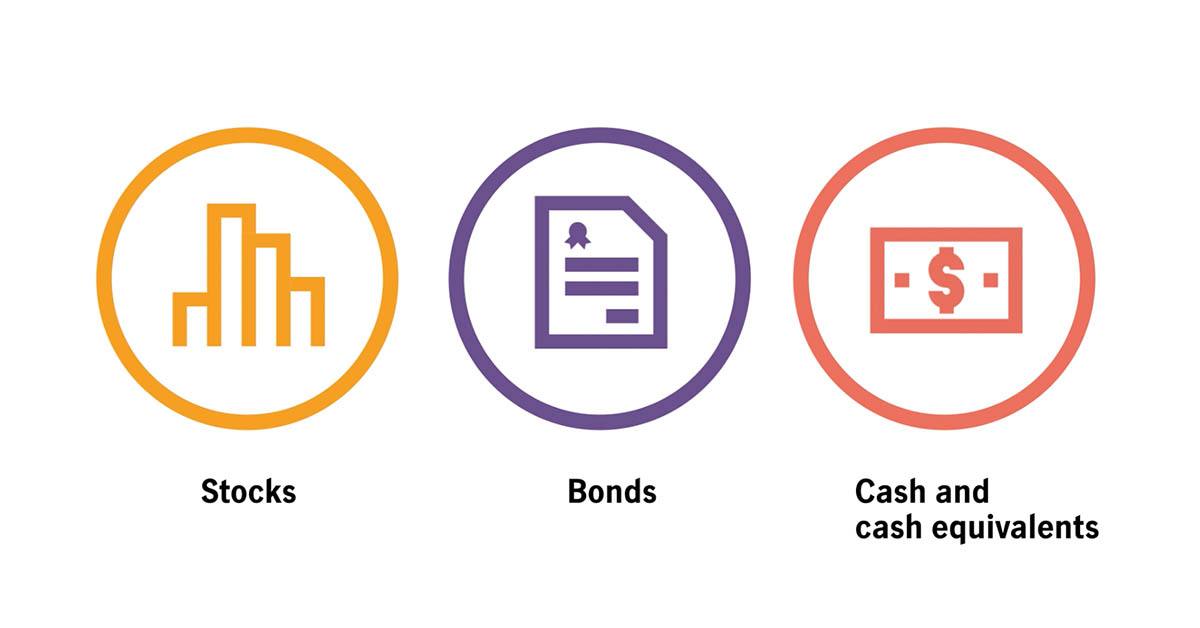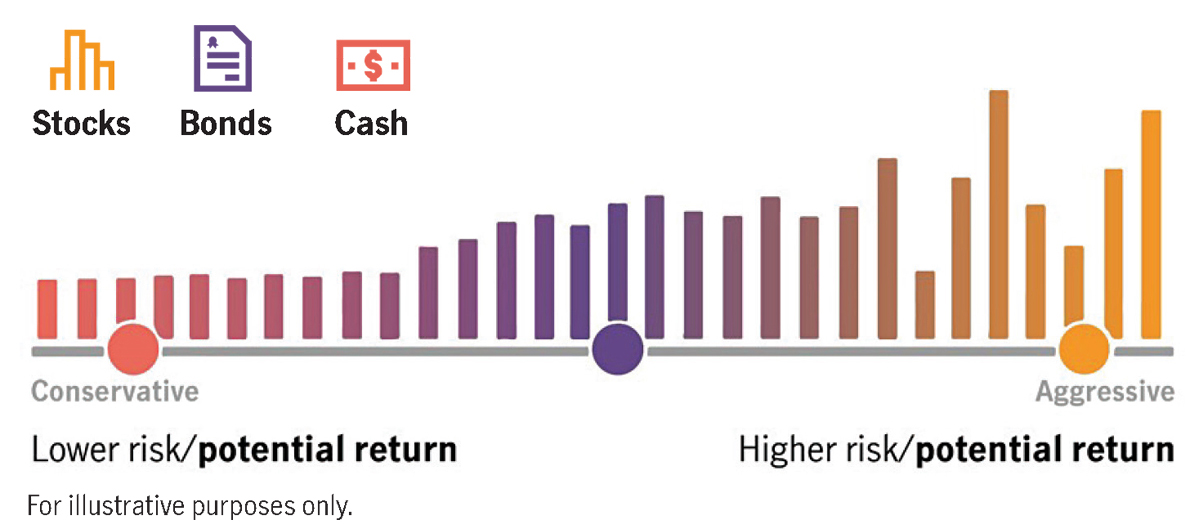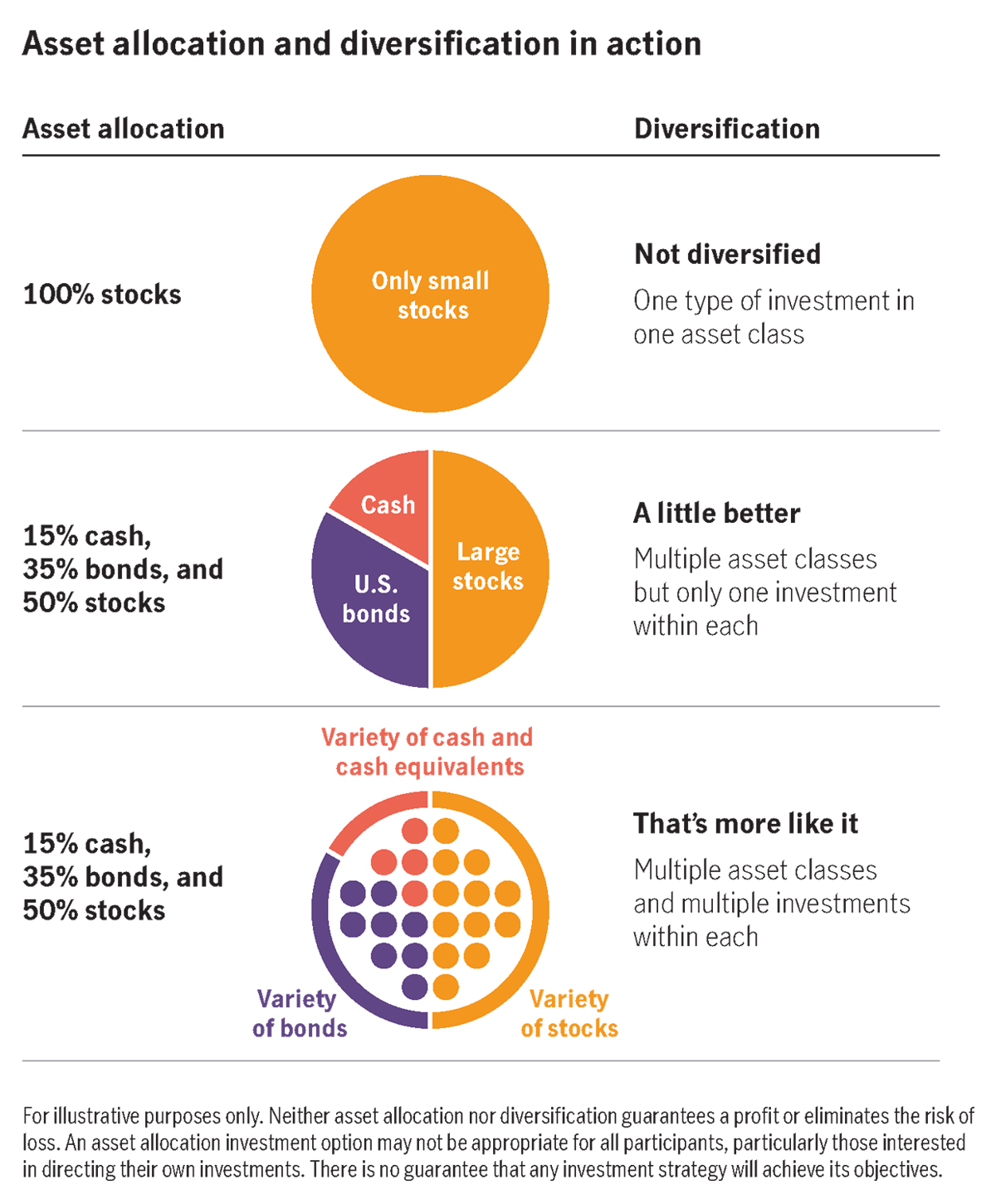The investment basics of asset allocation vs. diversification
We'll explain critical building blocks of investing: assets, risk, and diversification, and the difference between asset allocation and diversification.

What are assets?
Assets are anything that has value, such as a car, house, jewelry, investments, and cash. The assets we’re discussing are investments you can purchase on the stock market or include in your retirement plan—and those come in three key categories, called asset classes:
- Stocks—which are also called equities
- Bonds—which are also called fixed income
- Cash—which can also be a cash equivalent (an asset that’s very similar to cash)
 Emily R. Roland, CIMA, Co-Chief Investment Strategist, John Hancock Investment Management
Emily R. Roland, CIMA, Co-Chief Investment Strategist, John Hancock Investment Management
Each asset class comes with some amount of risk and offers a possible return on your investment.
- Stocks are the riskiest of the asset classes, but they also have the greatest potential for growth. They’re traded on the stock market, and some are riskier than others.
- Bonds aren’t as risky as stocks and not as safe as cash. As such, bonds may offer a moderate return on investment and generally have a lower chance of losing value—but they aren’t guaranteed to hold their value.
- Cash and cash equivalents, such as money market funds, are the least risky. They don’t promise to grow (much or at all) over time, but they generally hold their value .

What’s risk tolerance and risk capacity?
Every investor has a different willingness to take on risk in their investments. To help you determine how much risk you can take, it’s helpful to understand both your risk tolerance and your risk capacity.
- Risk tolerance represents how much risk you’re willing to take in your investments. It’s personal to you and may change throughout your life. For example, if the idea of a large investment losing value would keep you up at night, you may have a low risk tolerance.
- Risk capacity represents how much risk you’re able to accept, by taking your financial situation into account. For example, if a large investment loss would keep you from reaching your financial goals, your risk capacity may be low.
Together, your risk tolerance and risk capacity make up your risk profile, which helps to guide your investment decisions.
What are asset allocation and diversification?
Because each asset class has distinct risk and return characteristics, it can be helpful to mix them up to try to find the right balance. That’s where asset allocation and diversification come into play.
- Asset allocation describes how you spread your money across different asset classes.
- Diversification goes a step further, detailing how you spread your money among different assets within the same asset class.
Together, asset allocation and diversification can help you manage how much risk you take on when investing and help you avoid putting all your eggs in one basket.

Assets, diversification, and risk are three key building blocks for investing
These basic concepts form the foundation of an investment strategy, outlining what to invest in (asset classes), how much risk you're willing to take, and how much you want to invest in each class (diversification). With this foundation, you now have the context for learning about the different types of investments available in each asset class, and the types of diversification strategies to consider at different life stages—so you can start building your investment portfolio.
If you participate in a John Hancock retirement plan, you may log in here.
For complete information about a particular investment option, please read the fund prospectus. You should carefully consider the objectives, risks, charges, and expenses before investing. The prospectus contains this and other important information about the investment option and investment company. Please read the prospectus carefully before you invest or send money. Prospectus may only be available in English.
Important disclosures
Important disclosures
Neither asset allocation nor diversification guarantees a profit or protects against a loss. An asset allocation investment option may not be appropriate for all participants, particularly those interested in directing their own investments.
There is no guarantee that any investment strategy will achieve its objectives. Past performance does not guarantee future results.
It is your responsibility to select and monitor your investment options to meet your retirement objectives. You should review your investment strategy at least annually. You may also want to consult your own independent investment or tax advisor or legal counsel. The content of this document is for general information only and is believed to be accurate and reliable as of the posting date, but may be subject to change. It is not intended to provide investment, tax, plan design, or legal advice (unless otherwise indicated). Please consult your own independent advisor as to any investment, tax, or legal statements made.
John Hancock Retirement Plan Services LLC offers administrative and/or recordkeeping services to sponsors and administrators of retirement plans. John Hancock Trust Company LLC provides trust and custodial services to such plans. Group annuity contracts and recordkeeping agreements are issued by John Hancock Life Insurance Company (U.S.A.), Boston, MA (not licensed in NY), and
John Hancock Life Insurance Company of New York, Valhalla, NY. Product features and availability may differ by state. Securities are offered through John Hancock Distributors LLC, member FINRA, SIPC.
John Hancock Investment Management Distributors LLC is the principal underwriter and wholesale distribution broker-dealer for the John Hancock mutual funds, member FINRA, SIPC.
NOT FDIC INSURED. MAY LOSE VALUE. NOT BANK GUARANTEED.
© 2023 John Hancock. All rights reserved.
MF3004298 MGR0905233087885


